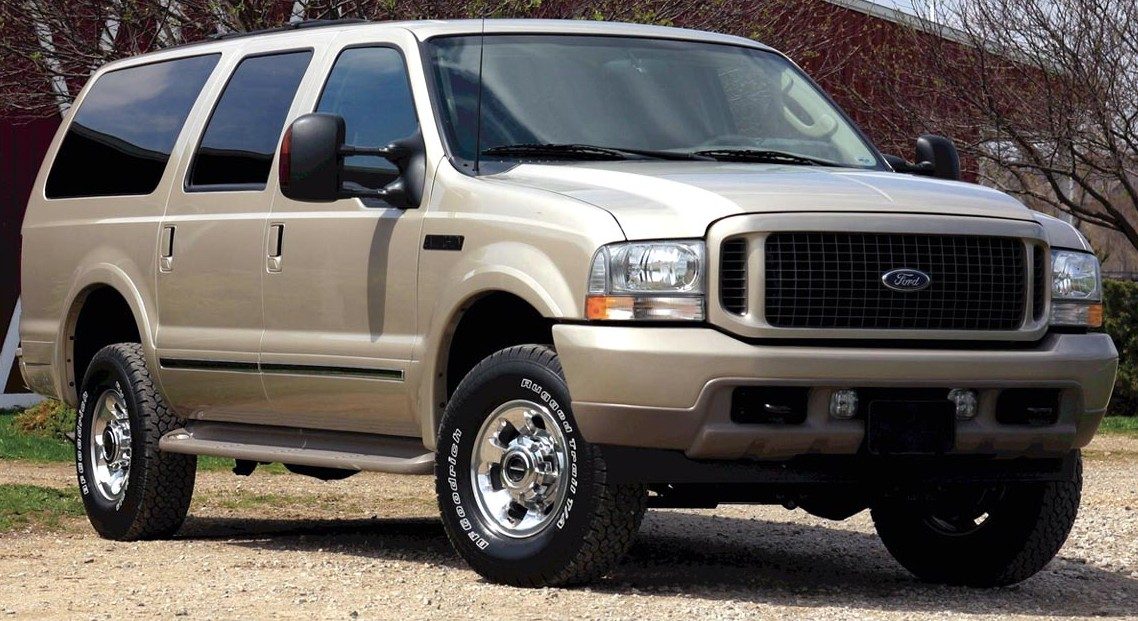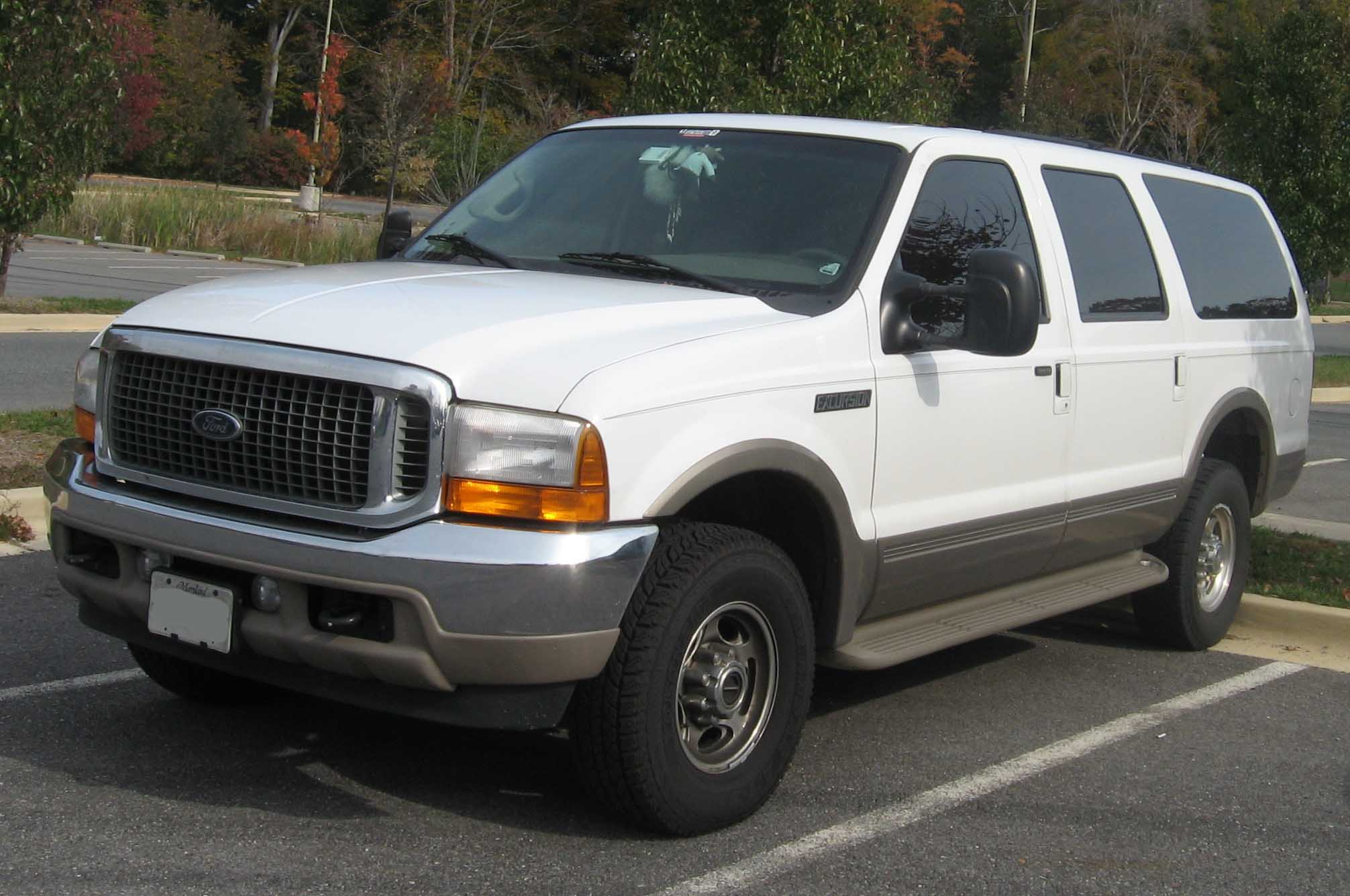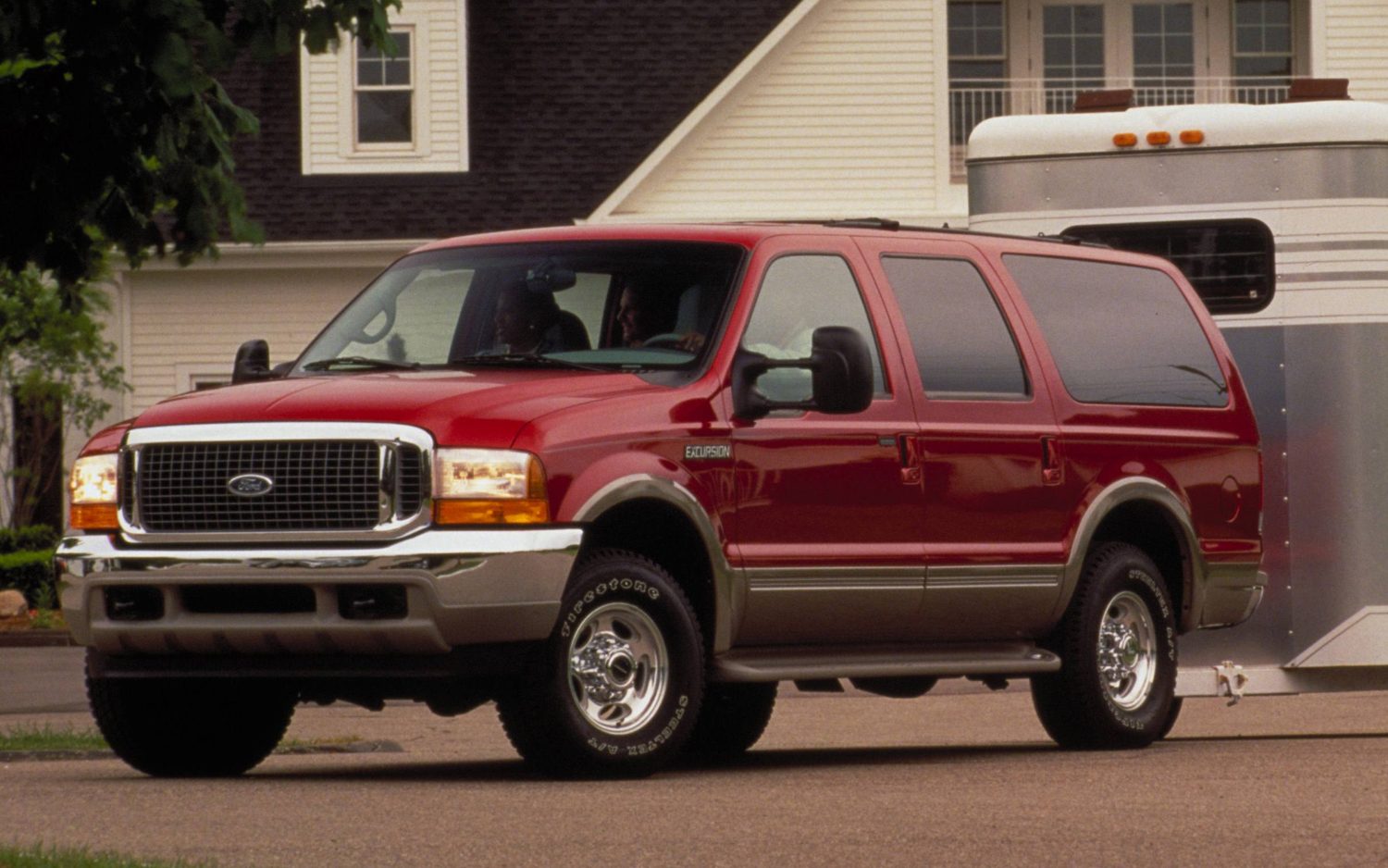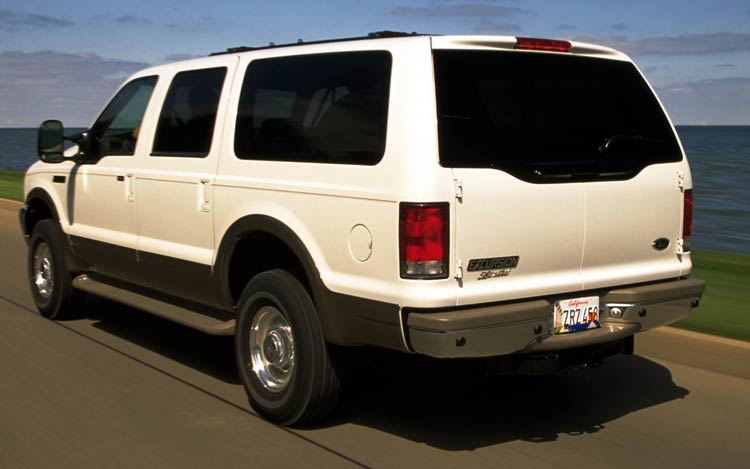- 15,465

- Orange County, NY
- GTP_GT916
- Nii916
2000-2005 Ford Excursion nominated by @Doog

Engines: 5.4L V8 (Triton), 6.8L V10 (Triton), 7.3L Turbodiesel V8 (Navistar T444E), 6.0L Turbodiesel V8 (Navistar VT365)
Power: 5.4 Triton: 255 hp; 6.8 Triton: 310 hp; T444E: 250 hp; VT365: 325 hp
Torque: 5.4 Triton: 350 lb-ft.; 6.8 Triton: 425 lb-ft.; T444E: 250 hp; VT365: 560 lb-ft.
Weight: Gas: 3280 kg; Diesel: 560 lb-ft.
Transmission: 4-speed automatic, 5-speed automatic
Drivetrain: Front engine, rear wheel drive; front engine, four wheel drive
Body Styles: 4-door SUV
Additional Info: "During its production, it was the largest and heaviest SUV sold in North America."

Engines: 5.4L V8 (Triton), 6.8L V10 (Triton), 7.3L Turbodiesel V8 (Navistar T444E), 6.0L Turbodiesel V8 (Navistar VT365)
Power: 5.4 Triton: 255 hp; 6.8 Triton: 310 hp; T444E: 250 hp; VT365: 325 hp
Torque: 5.4 Triton: 350 lb-ft.; 6.8 Triton: 425 lb-ft.; T444E: 250 hp; VT365: 560 lb-ft.
Weight: Gas: 3280 kg; Diesel: 560 lb-ft.
Transmission: 4-speed automatic, 5-speed automatic
Drivetrain: Front engine, rear wheel drive; front engine, four wheel drive
Body Styles: 4-door SUV
Additional Info: "During its production, it was the largest and heaviest SUV sold in North America."






